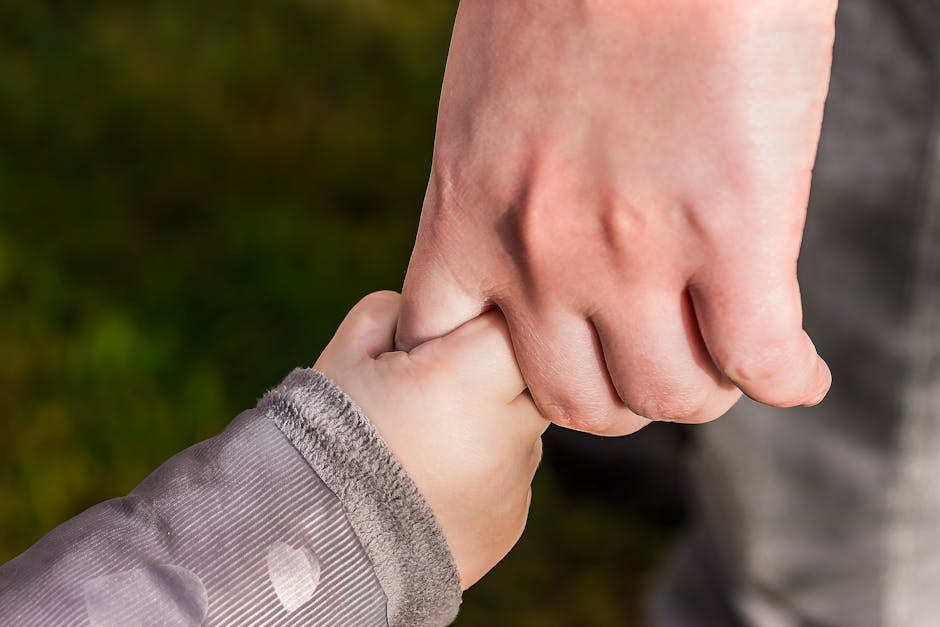New love often feels invincible – you float through bright days and easy laughter – until the moment friction shows up. The first fight can feel like a siren blaring through that calm, and it’s tempting to assume something is broken. It isn’t. A first fight is simply proof that two full human beings are in the room with their histories, hopes, habits, and boundaries. When you treat the first fight as information rather than a verdict, you give your relationship a chance to become wiser, sturdier, and more honest.
Immediate moves when tempers cool
Steady your breathing, skip the spiral. Adrenaline loves to sell catastrophe. Before you text a manifesto or stalk off, slow down. Name what happened in plain language – “we disagreed about leaving the party” – and remind yourself that the first fight is not a forecast of the whole future. A clearer nervous system leads to clearer choices.
Don’t weaponize silence. Going “ice cold” can feel like control, but it stalls understanding and magnifies hurt. If you truly need room, say so kindly and concretely: “I need twenty minutes to settle and then I want to talk.” That short sentence keeps connection alive even as you step back.

Take a short pause – not a disappearance. A breather that lasts a few hours or a night’s sleep can turn down the volume enough to hear what’s underneath. Vanishing for days, however, converts a solvable disagreement into a new problem. Treat the first fight as a conversation in progress, not a cliff you fell off.
Offer an olive branch that fits. Reaching out doesn’t mean you’re surrendering your point; it means you value the bond. A gentle check-in – a hug, a soft “Are you up for talking?” – breaks the stalemate. Repair begins the moment one person shows they’re willing to reconnect.
Apologize with substance, not just syllables. “I’m sorry” matters most when it names the impact and a change: “I’m sorry I raised my voice; next time I’ll call a timeout before I snap.” The first fight becomes a hinge toward growth when an apology contains a plan.

Listen all the way through. Listening isn’t waiting for your turn. It’s tracking feelings, not hunting for flaws. Reflect back what you heard – “You felt dismissed when I joked about it” – so your partner knows their meaning landed. Curiosity is the quickest way out of a loop.
Own your part without self-indictment. Responsibility isn’t the same as blame. If you contributed heat or confusion, say so plainly. Repairs are built from accurate self-descriptions, and the courage to name them turns a first fight into a training ground for trust.
Stay present when they re-open the topic. It takes nerve to circle back. If your partner approaches after cooling off, meet the effort. You can still set boundaries – “I’ll talk if we both take turns” – while honoring the attempt to reconnect.

Describe your view without moving the target. Use “I” statements and stick to this incident rather than dragging in the whole past. Say, “I felt cornered when the question kept coming,” instead of “You always interrogate me.” That difference is tiny on the page and huge in the room, especially around a first fight when the relationship is still learning your languages.
Skip the cheap shots. Sarcasm, name-calling, and personal jabs feel powerful for a second and poisonous for days. If you wouldn’t want it transcribed and read back, don’t say it. Respect is the floor you stand on while you sort the rest out.
From flare-up to insight
Hunt for the root, not the decoy. The argument about dishes or a late text is often a signpost pointing toward autonomy, attention, or reliability. Ask, “What did this represent to you?” The first fight frequently reveals a value, not just a behavior.
Co-design a fix. Solutions that stick are co-authored. Translate feelings into agreements you can test in real life: a time-out phrase you both respect, a check-in ritual before bed, or a policy of clarifying plans the morning of an event. Turning insight into practice is how a first fight pays dividends.
Plan prevention, not perfection. You won’t avoid every disagreement, and you don’t need to. Identify hot buttons and early warning signs – the moment voices rise, the moment one of you starts defending a biography instead of the moment at hand. Agree on de-escalation moves before you need them.
Invite expert help if the loop repeats. If the same topic keeps reappearing and the two of you feel stuck, a counselor offers structure and new tools. There’s no shame in that – it’s just a strategic way to make sure the first fight doesn’t become the ongoing fight.
Affection is optional, safety is not. Movies often cut from conflict to passion; real people sometimes need quiet, a walk, or a long hug. Let closeness match readiness. The point after a first fight is emotional safety – when safety returns, intimacy returns.
What conflict really is
Many people hear “conflict” and picture a courtroom where someone must win and someone must lose. In relationships, conflict is rarely about victory – it’s usually about perceived incompatible goals. You want to stay longer; I want to leave earlier. You want spontaneous plans; I want certainty. Notice the word “perceived.” Sometimes our goals aren’t as opposite as they appear. The first fight can expose the surface clash while the deeper intentions actually complement each other: one person wants connection, the other wants rest. Both needs matter. Once you learn to translate behaviors into needs, the first fight becomes a map rather than a minefield.
It helps to remember that conflict is part of closeness. You can have love and differences in the same room. The question isn’t “How do we never disagree?” – it’s “How do we recognize what this moment is trying to teach?” Treating the first fight as shared study – the two of you versus the problem – keeps dignity intact while you explore the terrain.
Fighting styles that derail progress
People default to styles that once protected them. Knowing these patterns gives you a choice and keeps a first fight from hardening into a habit.
Competing. When every disagreement becomes a scoreboard, closeness shrinks. If you treat your partner as an opponent, your “win” costs the relationship. Replace the duel with a joint briefing: “What outcome would feel decent to both of us?” That question disarms the match-point mindset that can supercharge a first fight.
Avoiding. Avoidance whispers, “If we ignore it, it dies.” It doesn’t – it grows roots. Postponing can be wise when emotions run hot, but permanent postponement buries the issue alive. Respect your needs for space and your need to return.
Accommodating. Generosity is lovely; surrendering your needs as a lifestyle breeds resentment. Choose your moments to yield, especially in public or time-sensitive situations, but make sure your preferences also find airtime later. A lopsided pattern will turn a first fight into a silent ledger of unpaid debts.
Compromising and collaborating. Compromise means each person gives a little and gets a little; it’s fair and often practical. Collaboration goes deeper – you examine the layered needs and design a solution where both of you feel seen. It takes longer, but the result strengthens the bond and transforms a first fight into a rehearsal for future resilience.
A collaborative roadmap you can reuse
Name the problem and the unmet needs. Agree on the headline – “We argued about time with friends” – and then each define what felt missing. Maybe one of you needs more inclusion, the other needs decompression. Naming turns fog into shapes you can work with after a first fight.
Schedule the conversation. Setting a time might feel formal, but it protects the talk from being ambushed by fatigue or hurry. You both arrive on purpose, which signals respect and lowers defensiveness – crucial when you’re processing a first fight.
Describe, don’t diagnose. Share observations and effects rather than motives: “When plans changed at the last minute, I felt stressed,” not “You don’t care.” Description invites problem-solving; diagnosis invites counterattack.
Practice earned empathy. Empathy isn’t agreement – it’s accurate understanding. Try to state their position better than they can, then check if you got it right. That discipline reduces misinterpretation and makes room for both truths to exist in one conversation about a first fight.
Negotiate specifics. Vague good intentions melt under pressure. Turn principles into behaviors: “Text me if you’ll be late,” “Use our timeout phrase when voices rise,” “Decide together by noon.” Specifics are the scaffolding that keeps repairs upright.
Follow through and circle back. Agreements live or die in everyday practice. Try the plan for a week or two, then debrief: What worked? What needs tweaking? Iteration is how couples build culture – the set of shared moves that make the next first fight less volatile.
Putting the lessons into daily practice
No relationship needs to be conflict-free to be healthy. What it needs is a way to metabolize conflict into intimacy and learning. That begins with right-sized reactions – neither minimizing nor catastrophizing – and continues with skills that grow through repetition. The first fight is the first rep. Each rep makes you steadier.
Language is one of your best tools. Choose words that keep doors open: “help me understand,” “can we rewind that moment,” “what were you hoping for there.” These phrases carry humility and curiosity, which are rocket fuel for repair. When the two of you trade postures of defensiveness for practices of inquiry, the first fight stops being a headline and becomes a footnote in your shared story.
Boundaries matter as much as bridges. Healthy boundaries say what you’ll do to protect your nervous system – “I’m calling a five-minute break to breathe” – without threatening disconnection. Boundaries are not walls; they’re agreements that make closeness sustainable. They allow you to revisit the topic without fearing emotional whiplash, which is why they’re invaluable during and after a first fight.
Finally, remember that tenderness and accountability can coexist. You can validate your partner’s feelings while also holding firm to your needs. You can apologize for tone while standing by a value. This both-and stance is one of the surest signs that a first fight taught you something useful. Over time, the goal isn’t to avoid friction – it’s to become the couple that knows how to turn friction into guidance, care, and a more livable rhythm.
When you look back months from now, you might see that the first fight was the doorway to a deeper partnership. You learned how to pause, how to return, how to translate complaints into needs, how to design solutions you both can carry. None of that requires perfection. It simply asks for attention, honesty, and a willingness to keep choosing each other while you learn. If you can do that, the first fight won’t be a scar; it will be the place where your relationship started telling the truth and discovered it could handle the truth together.